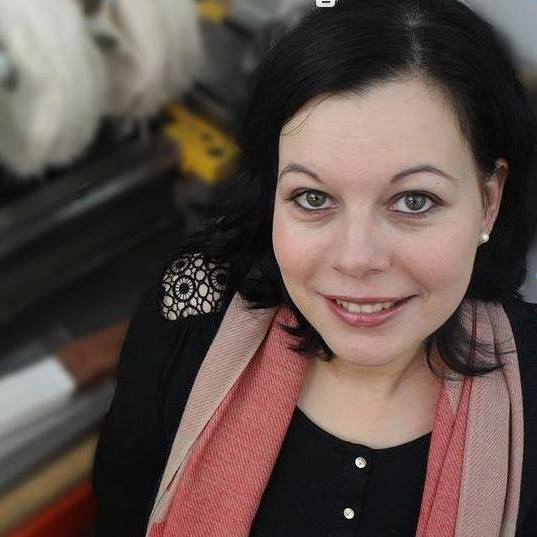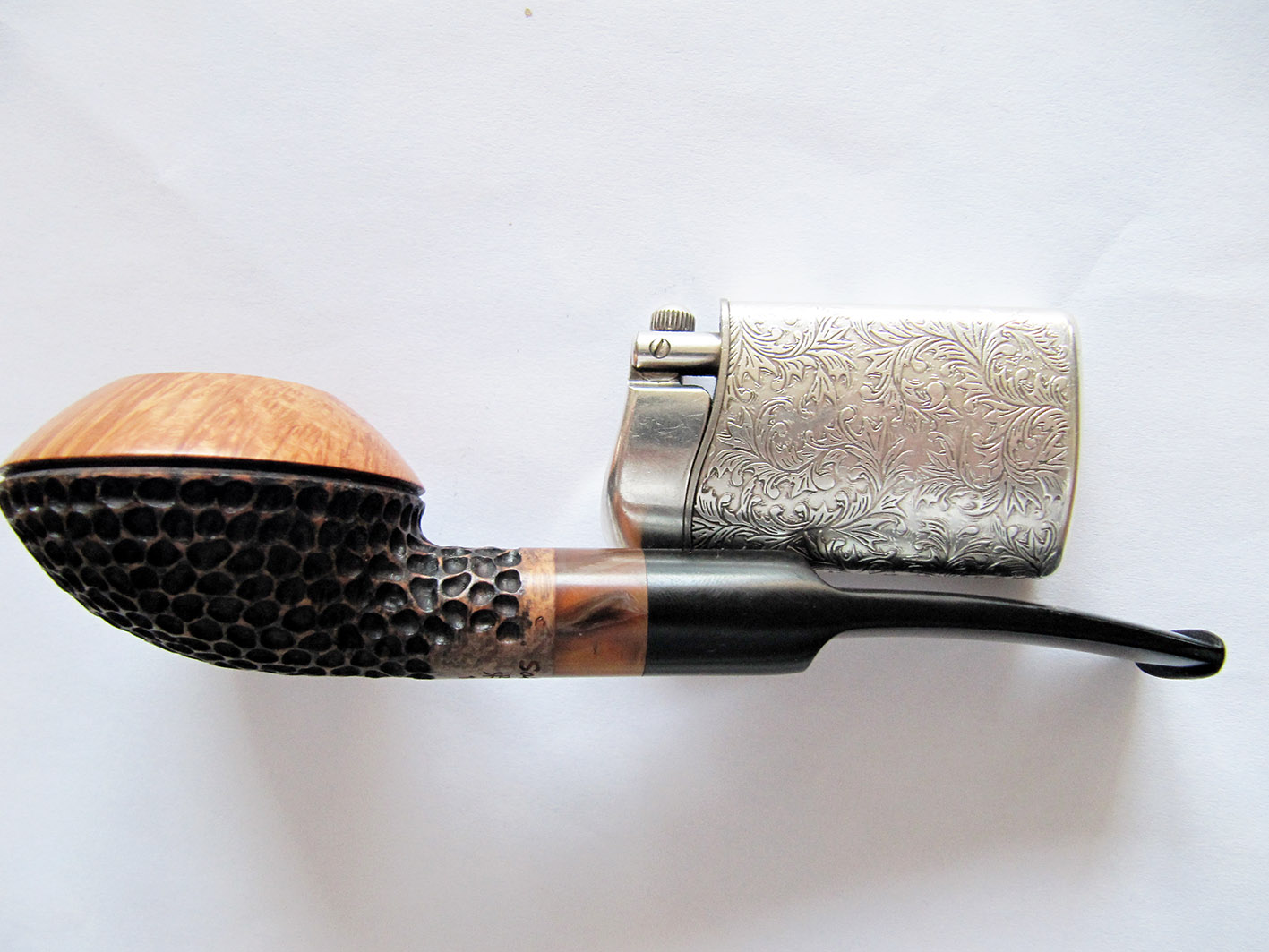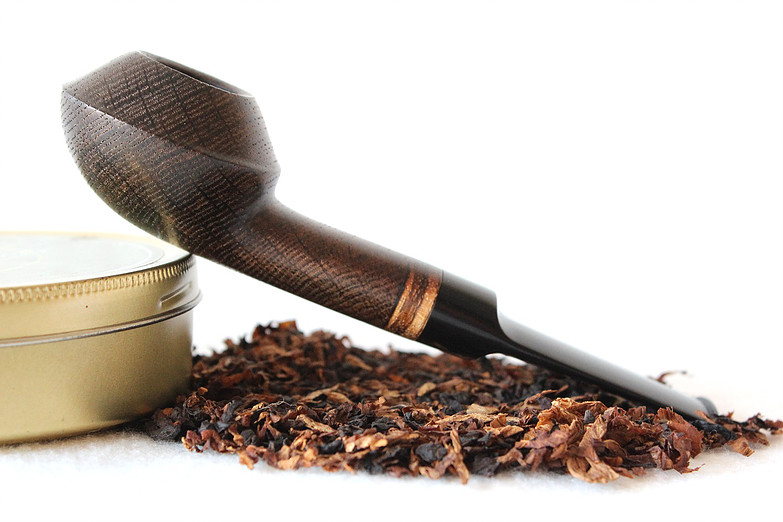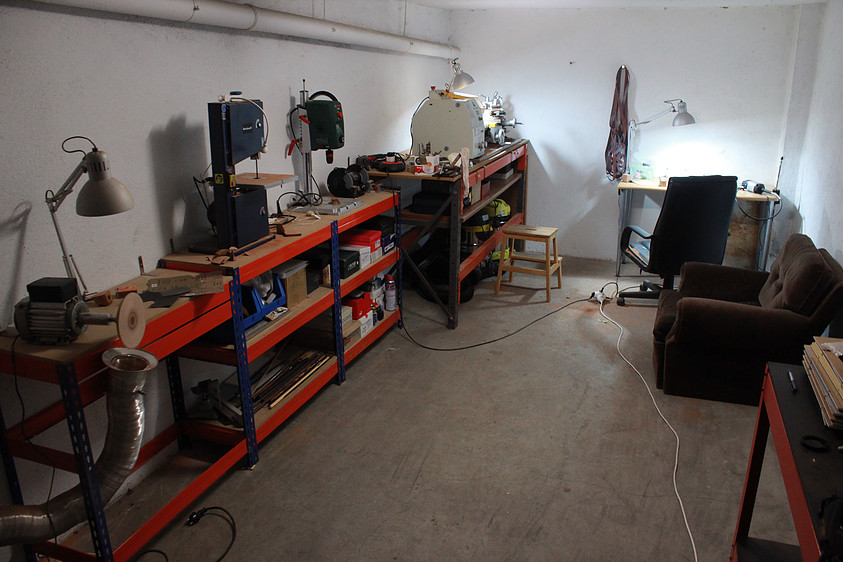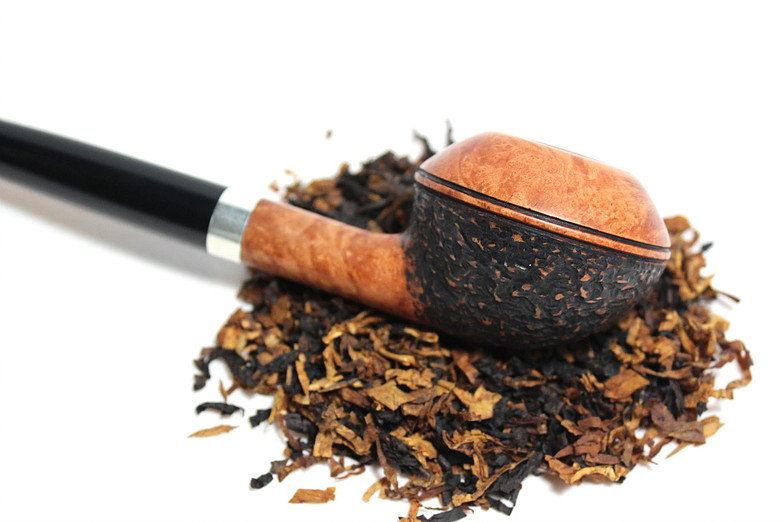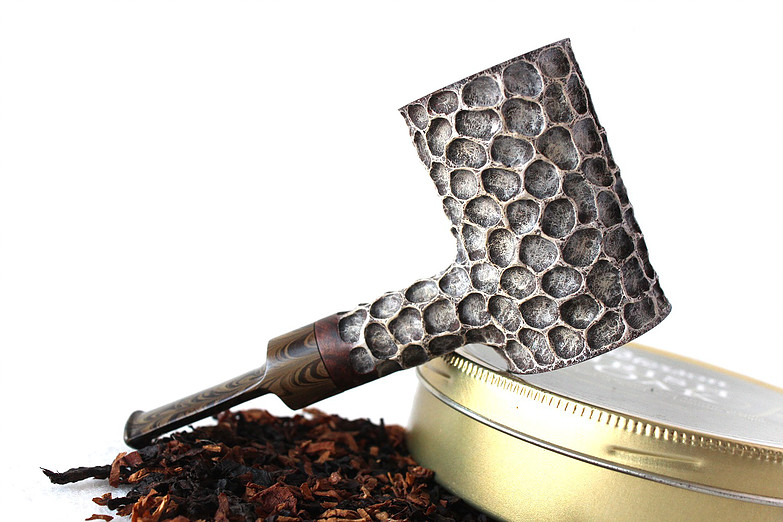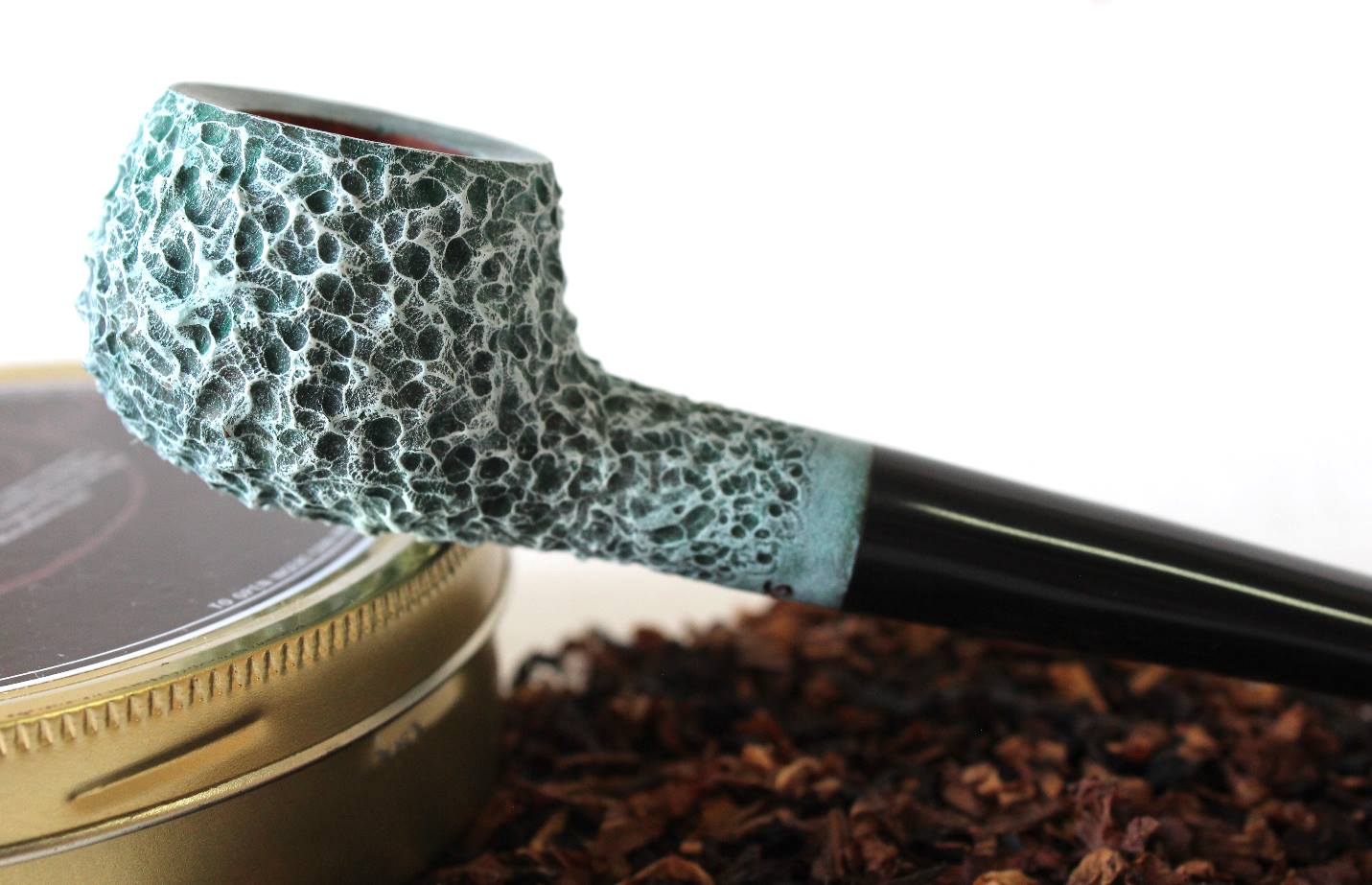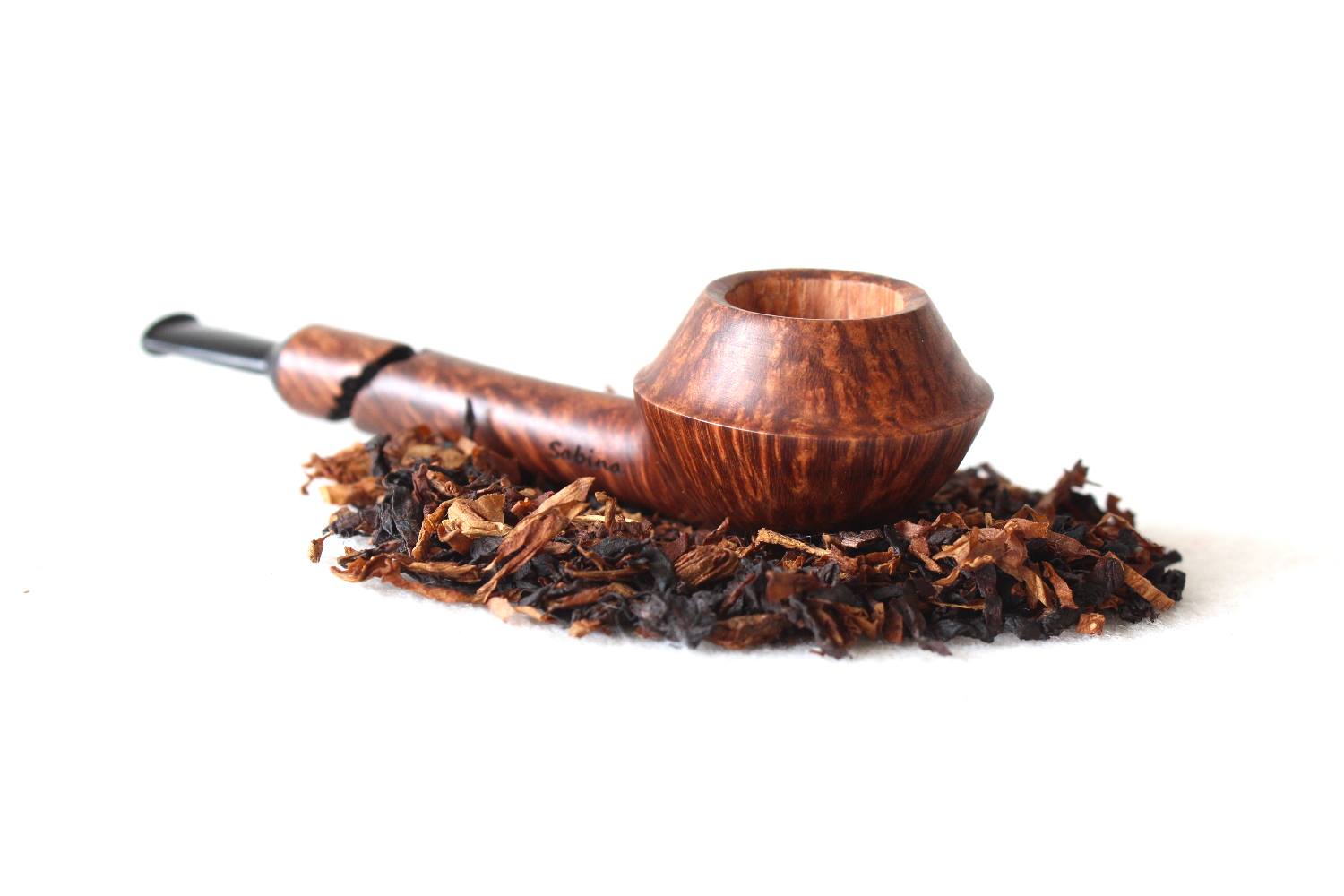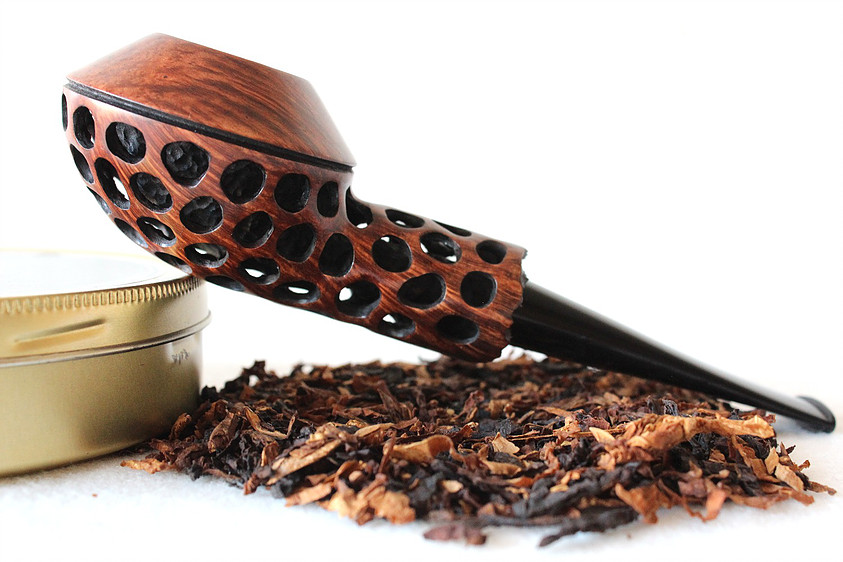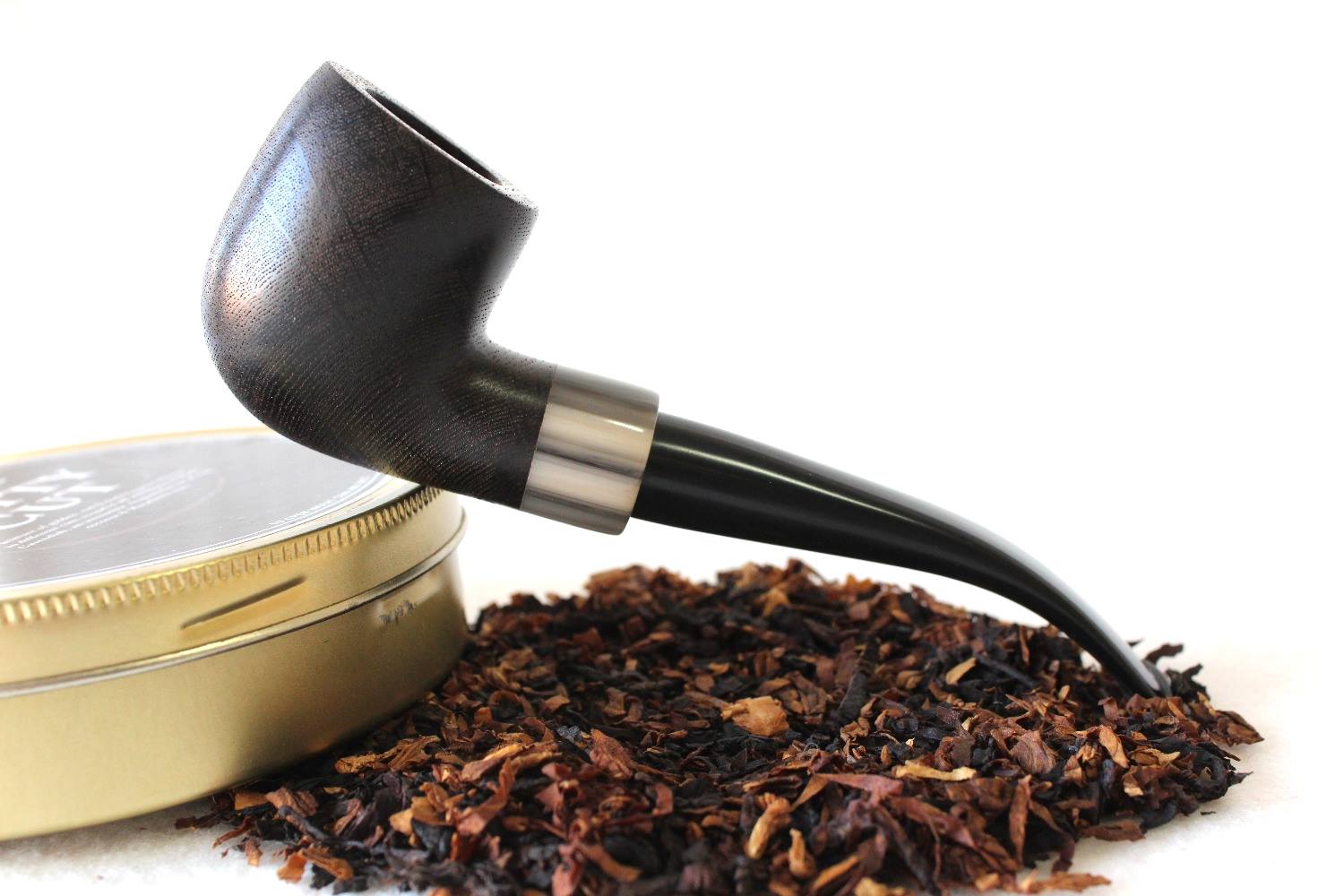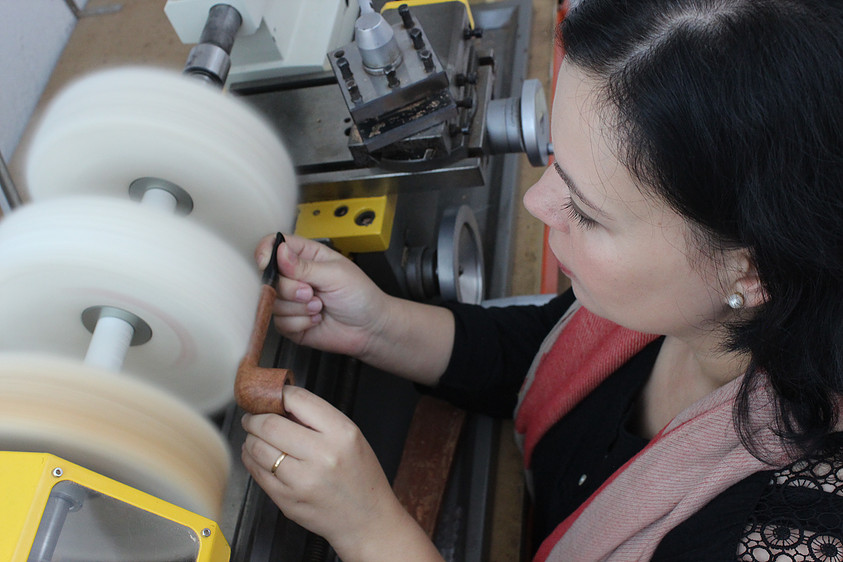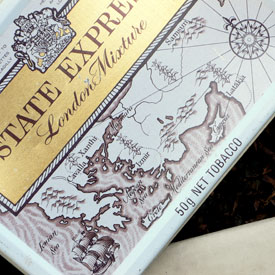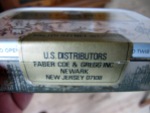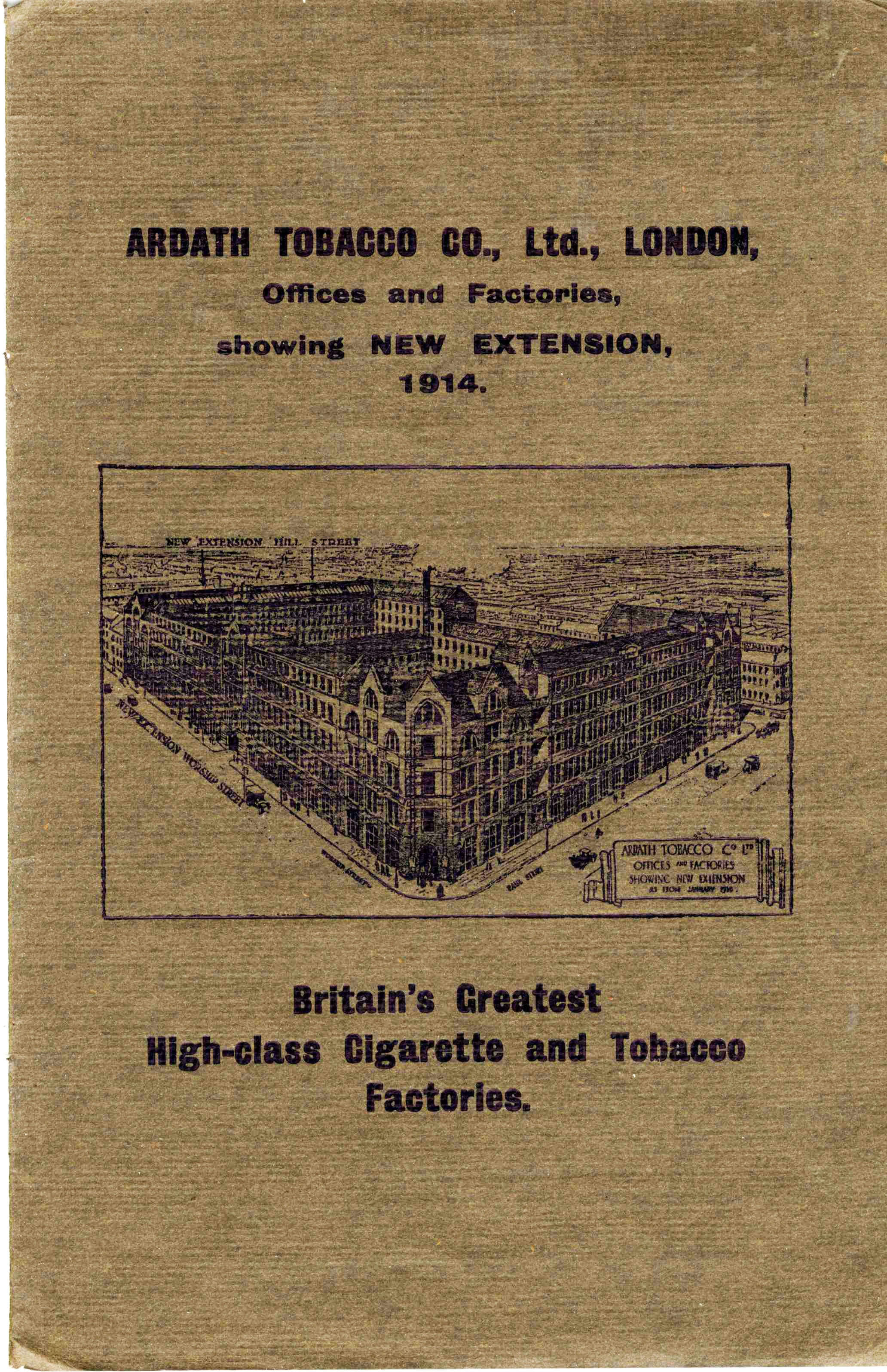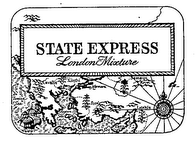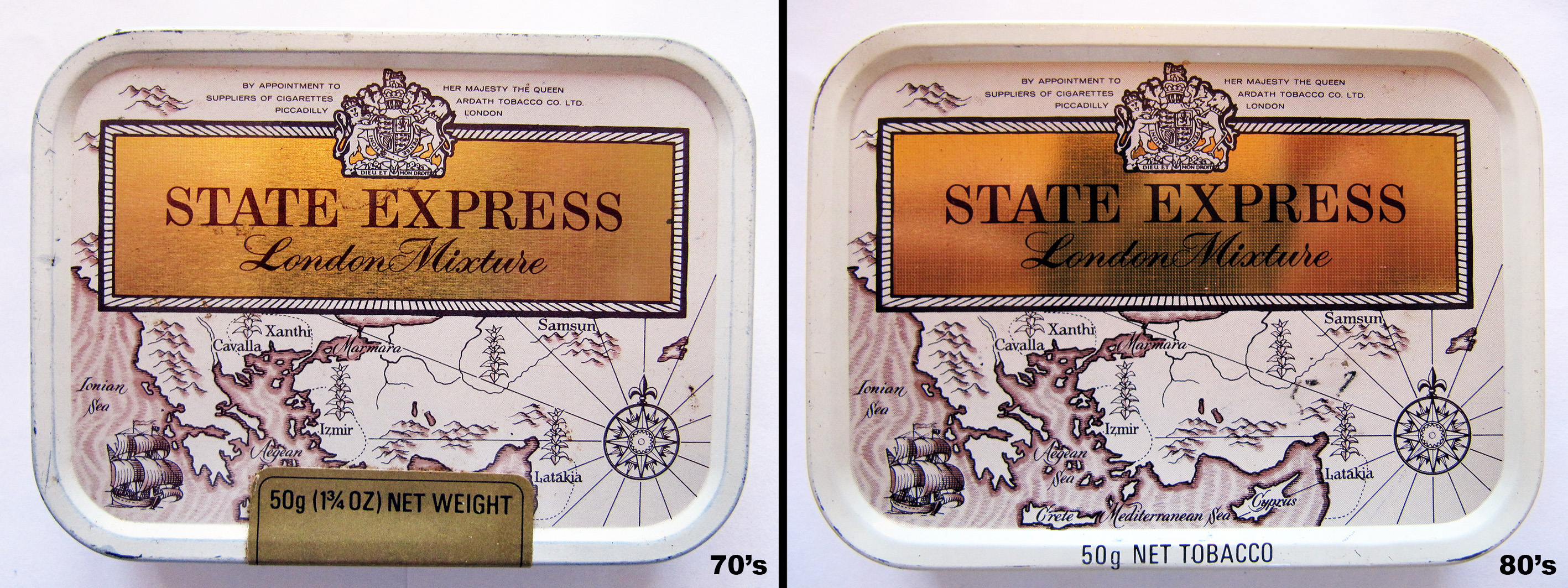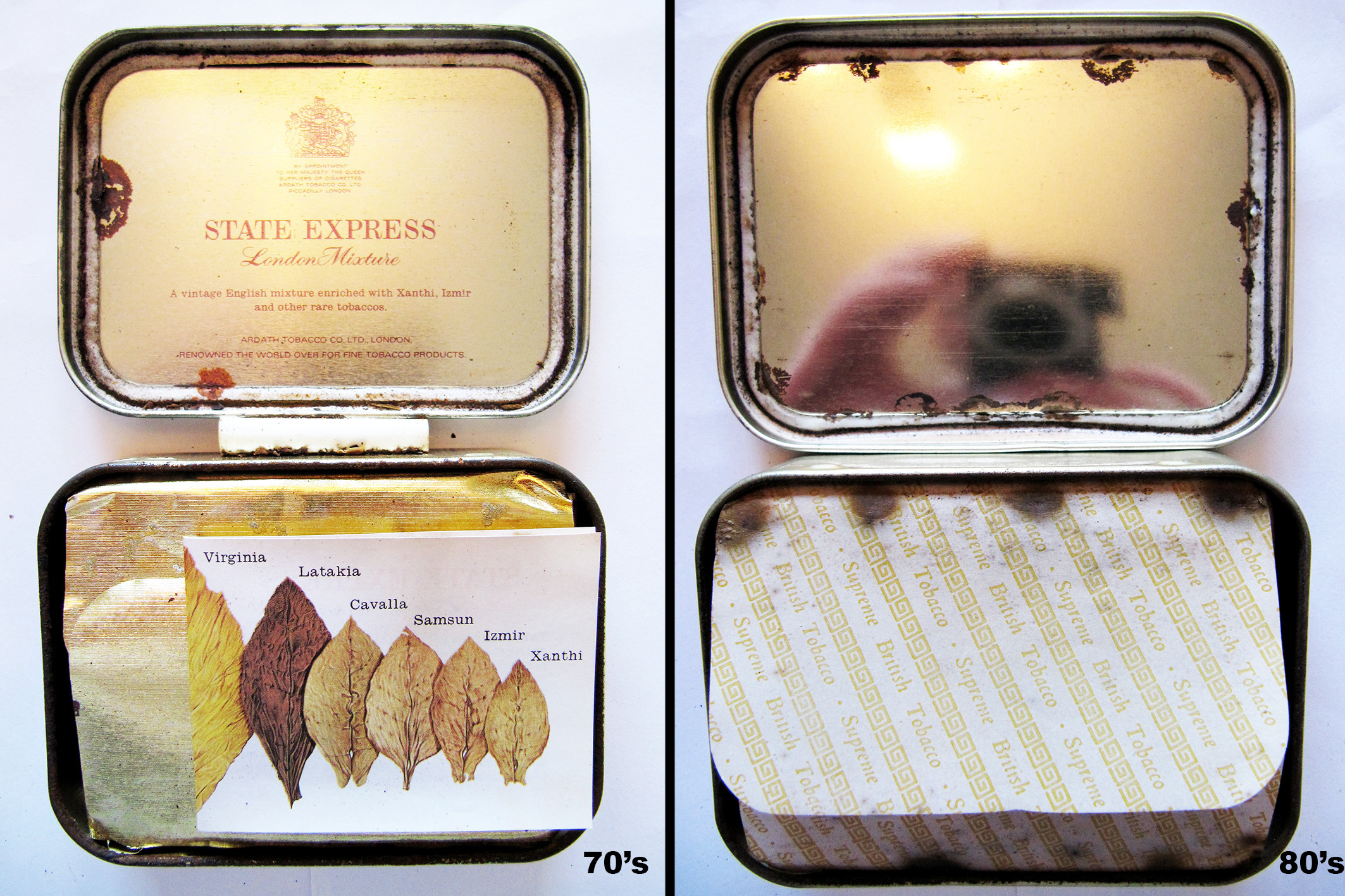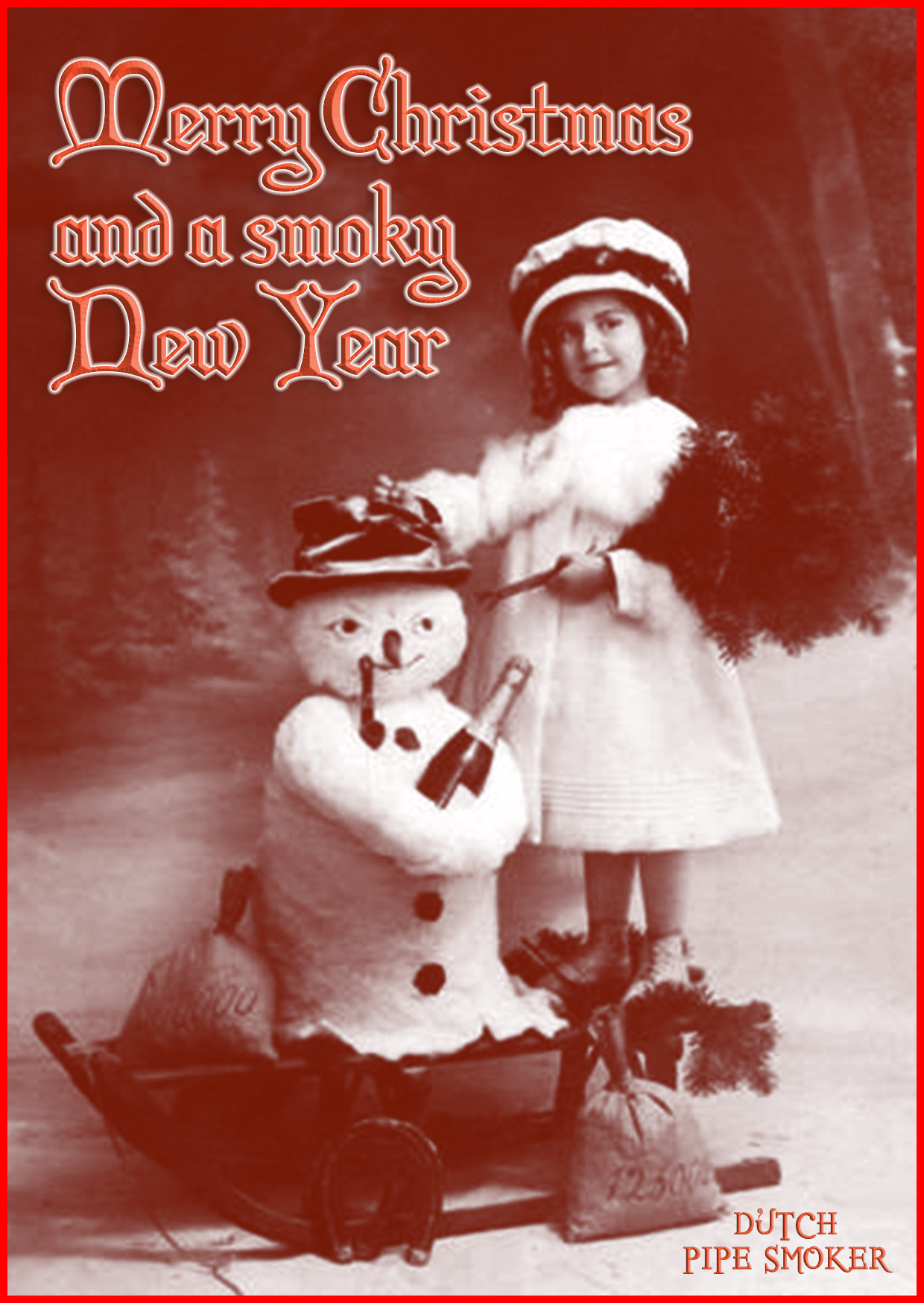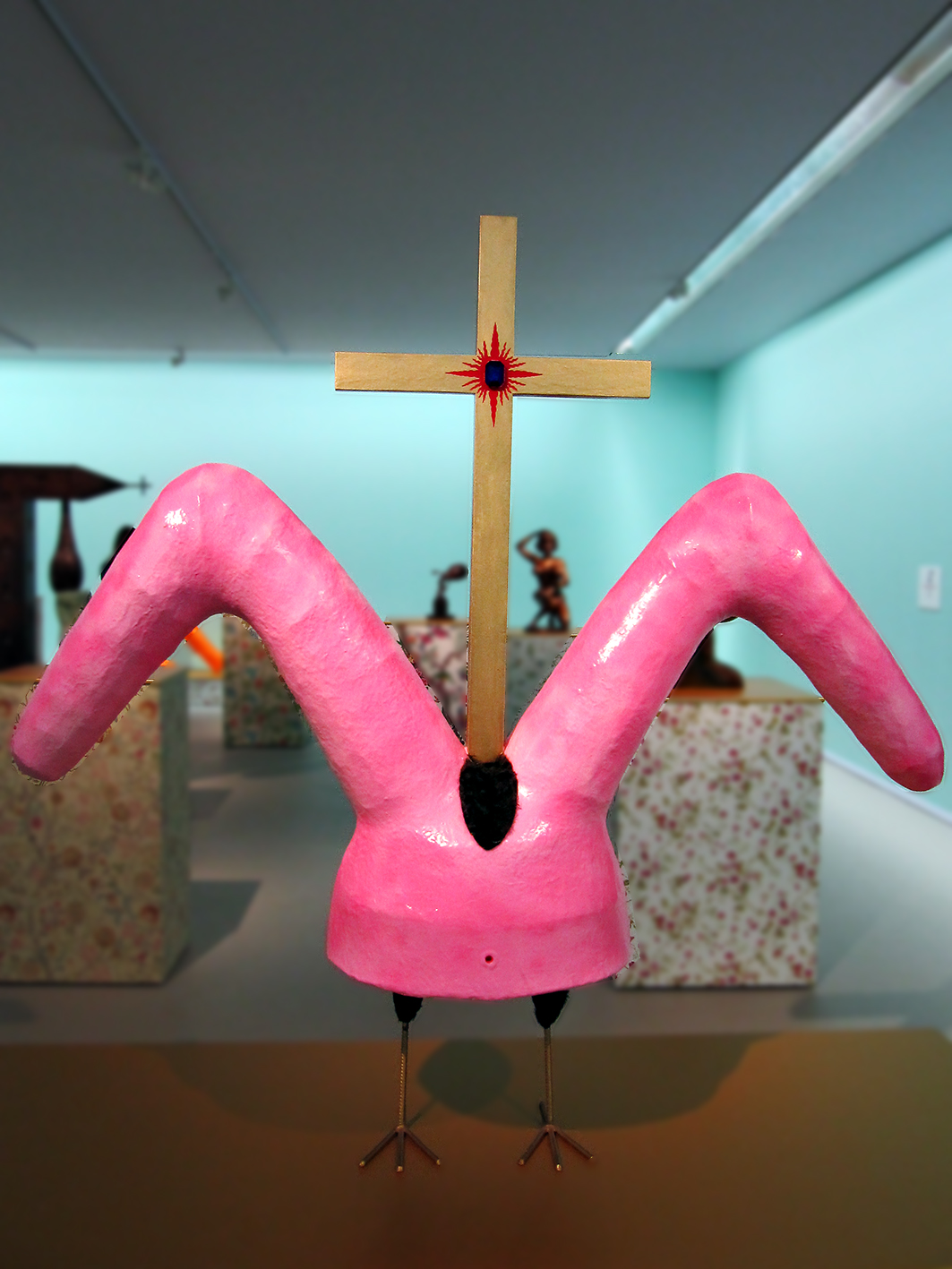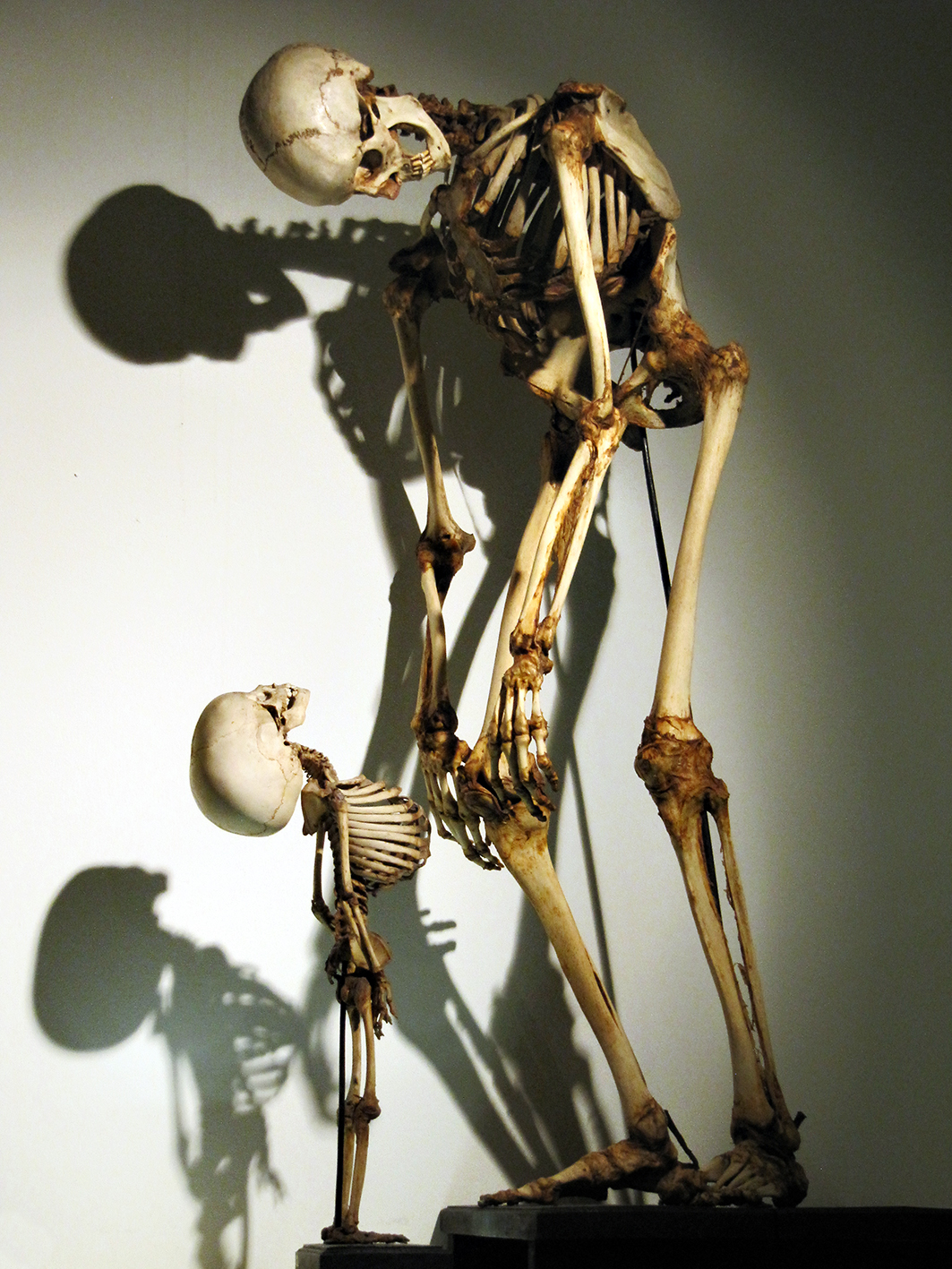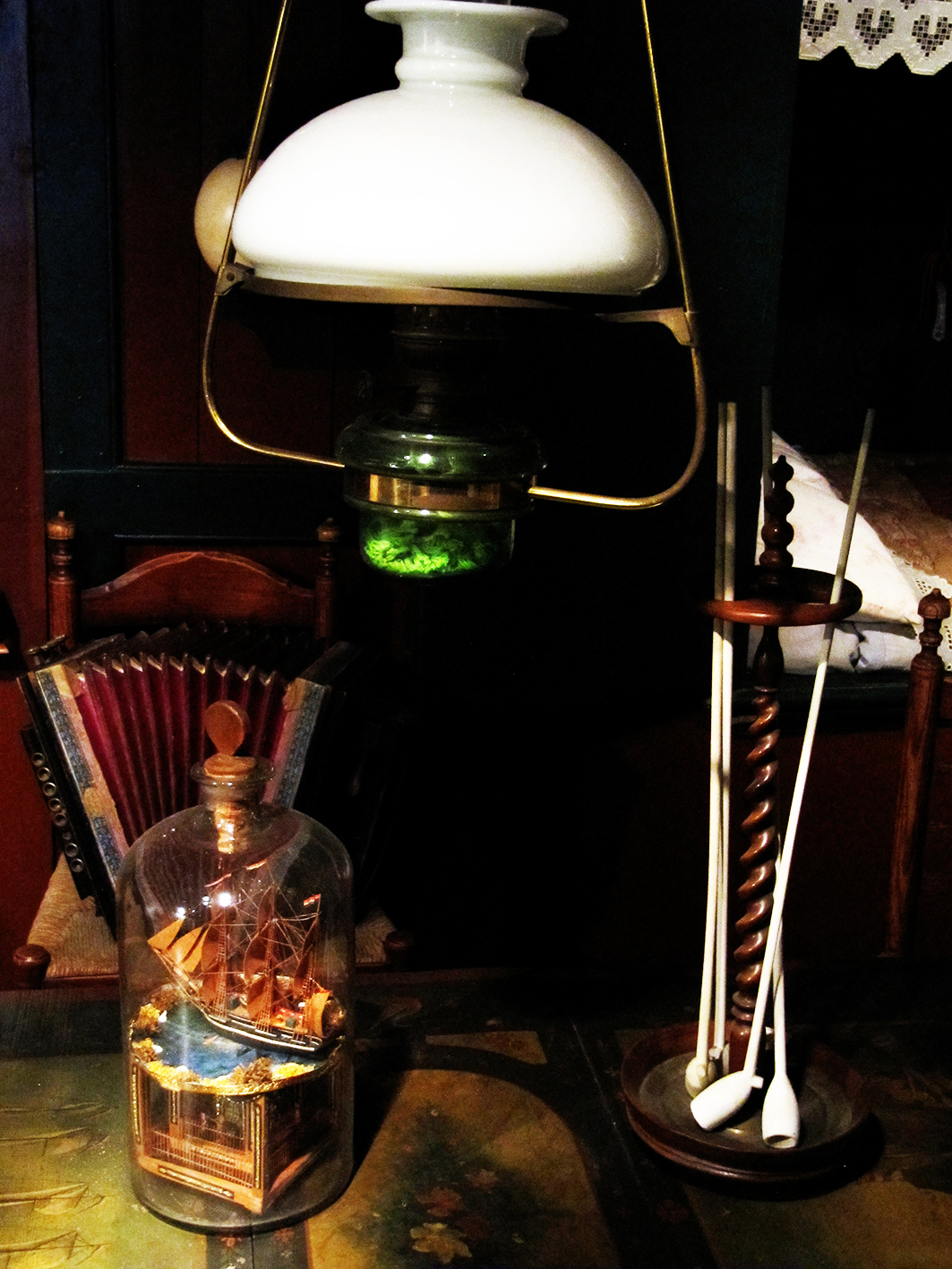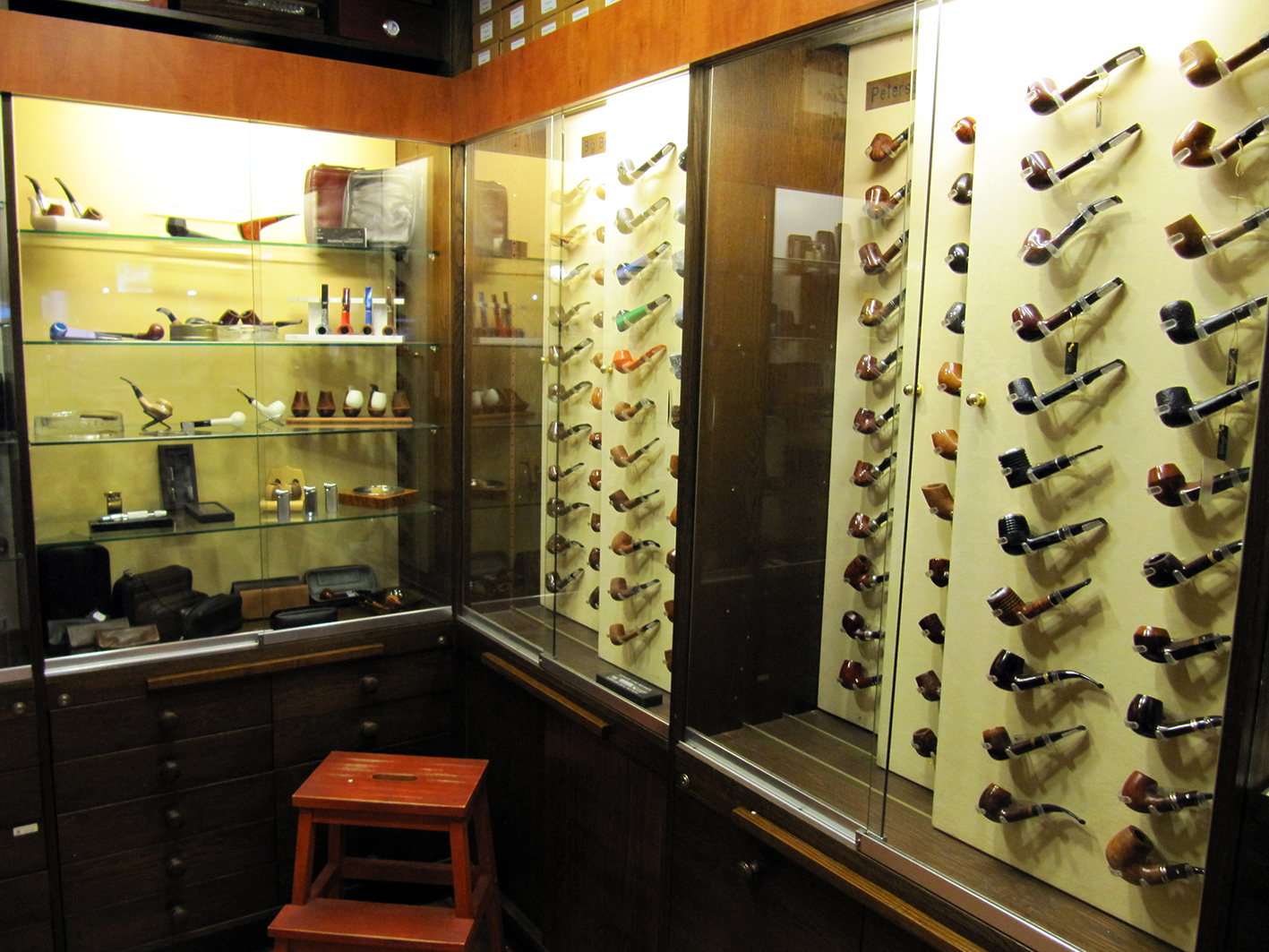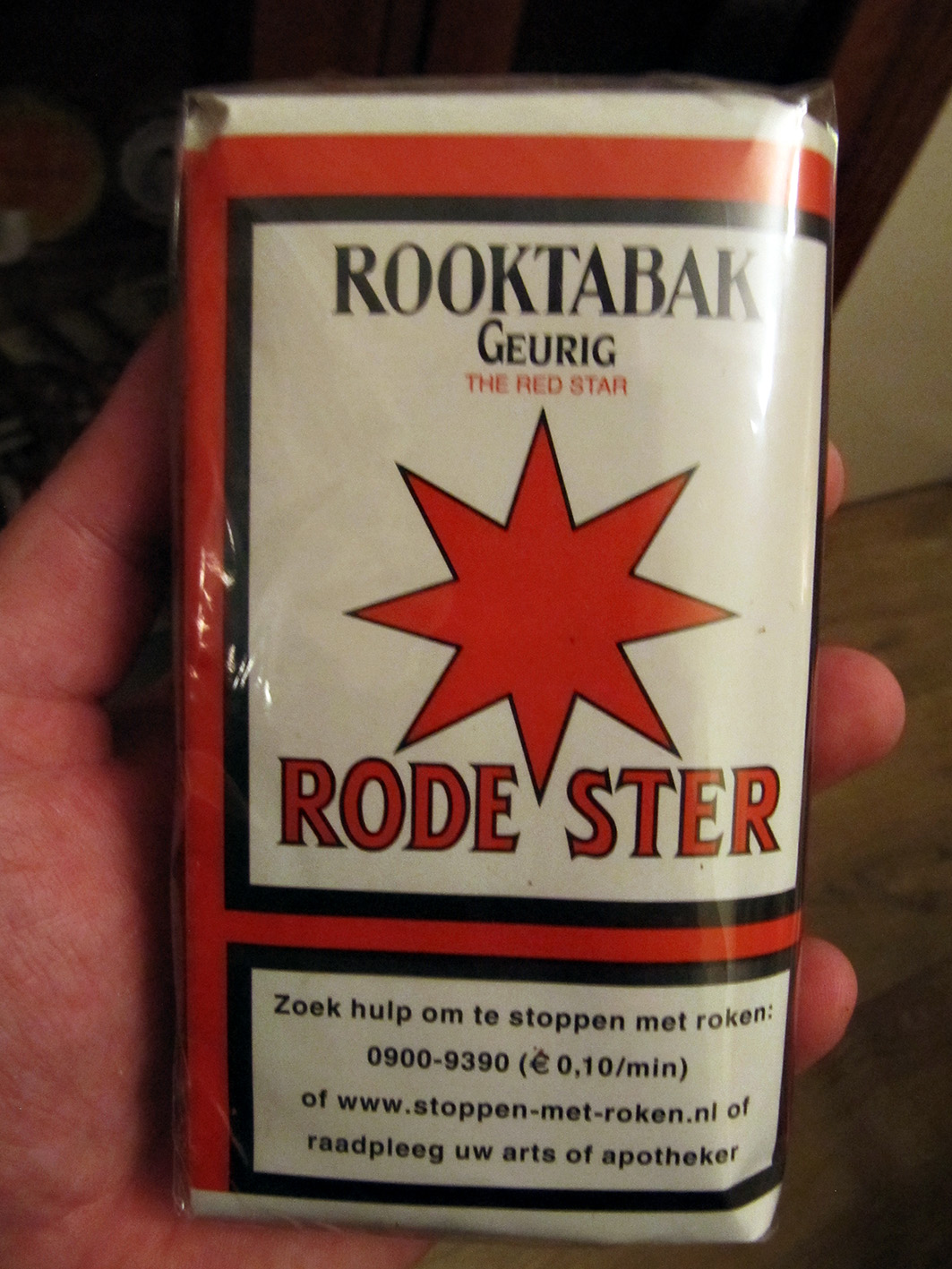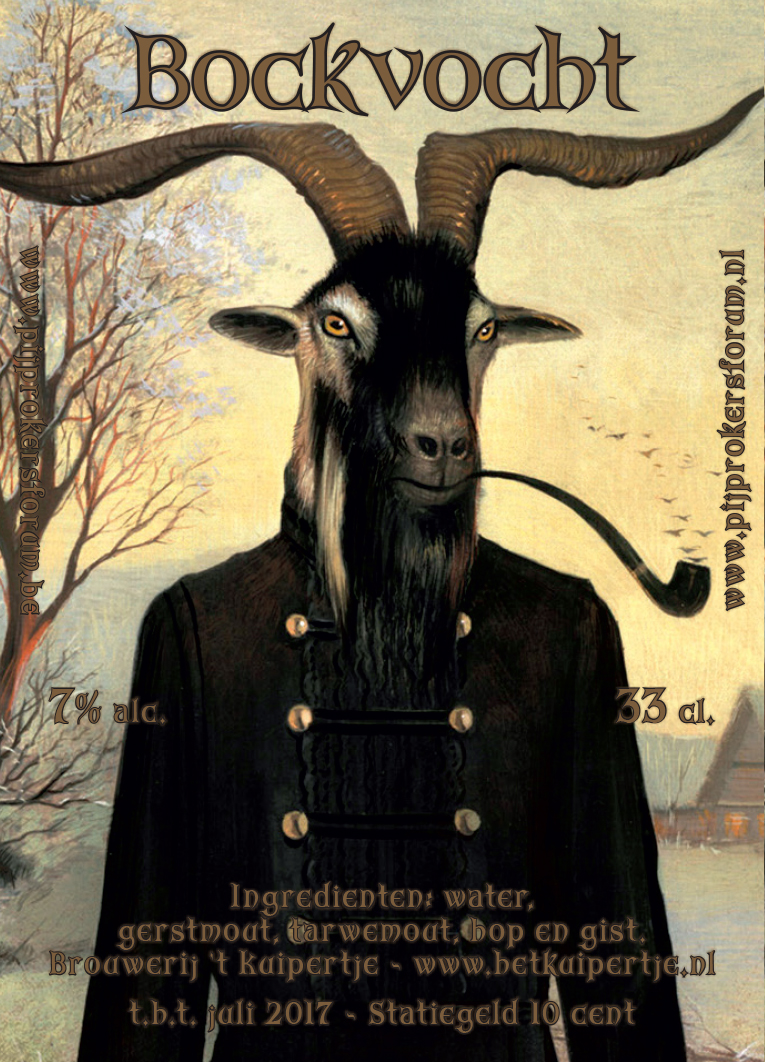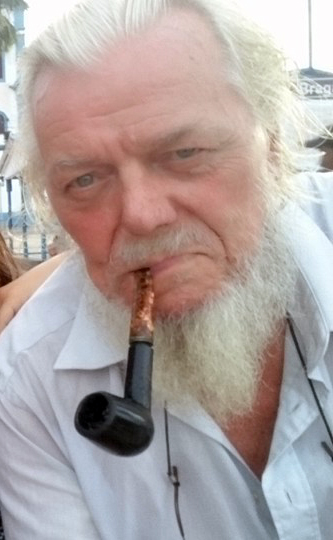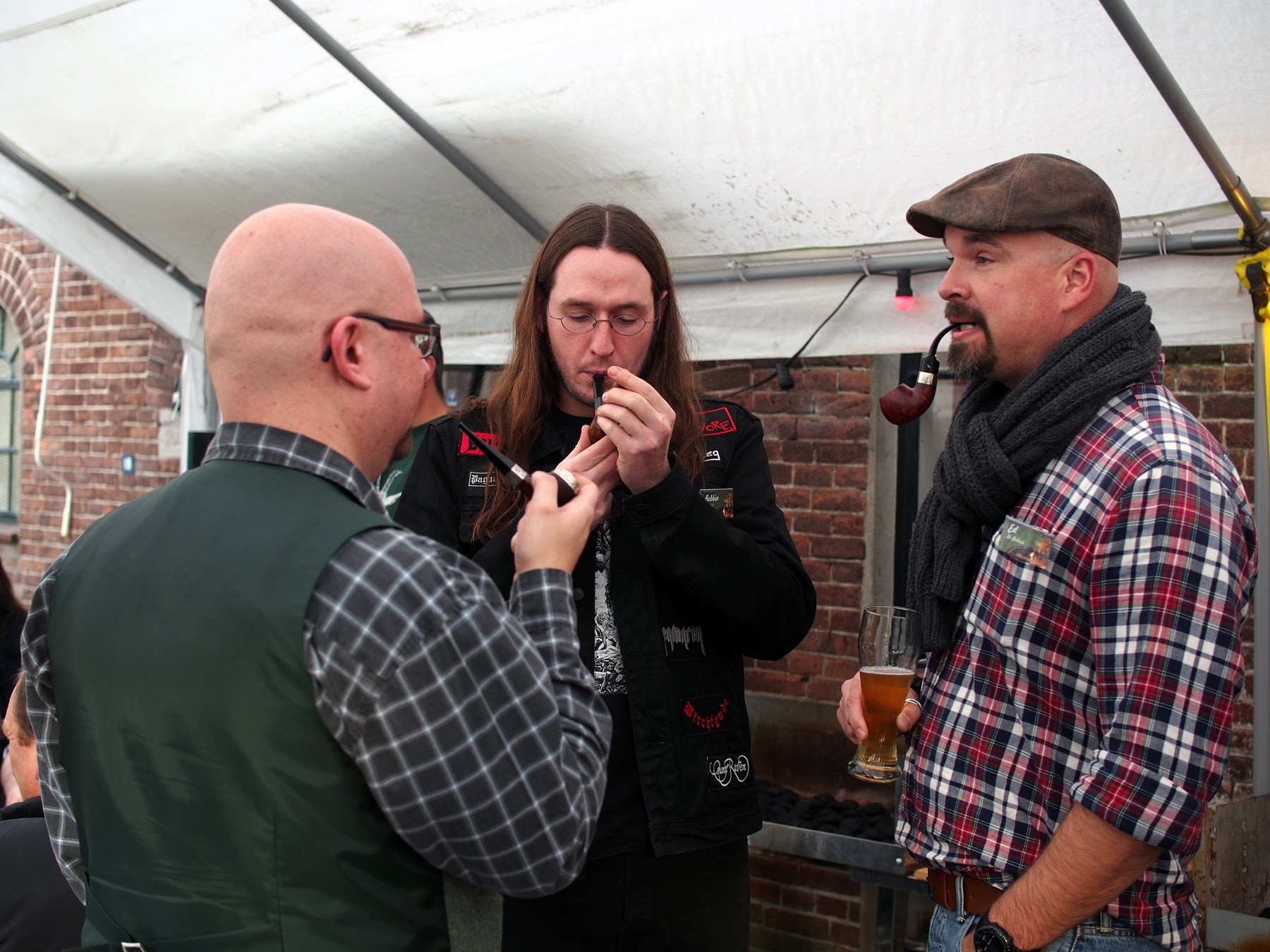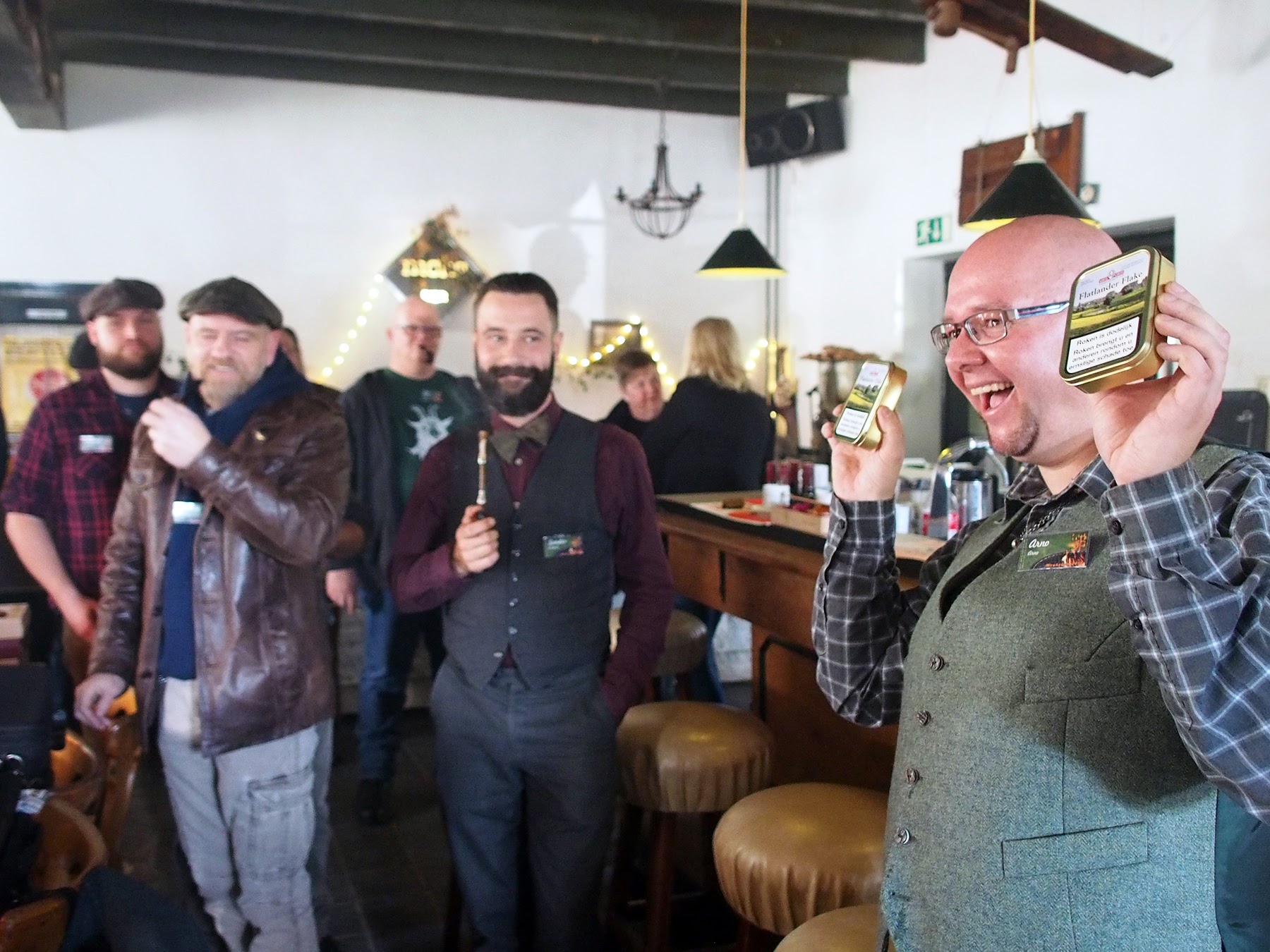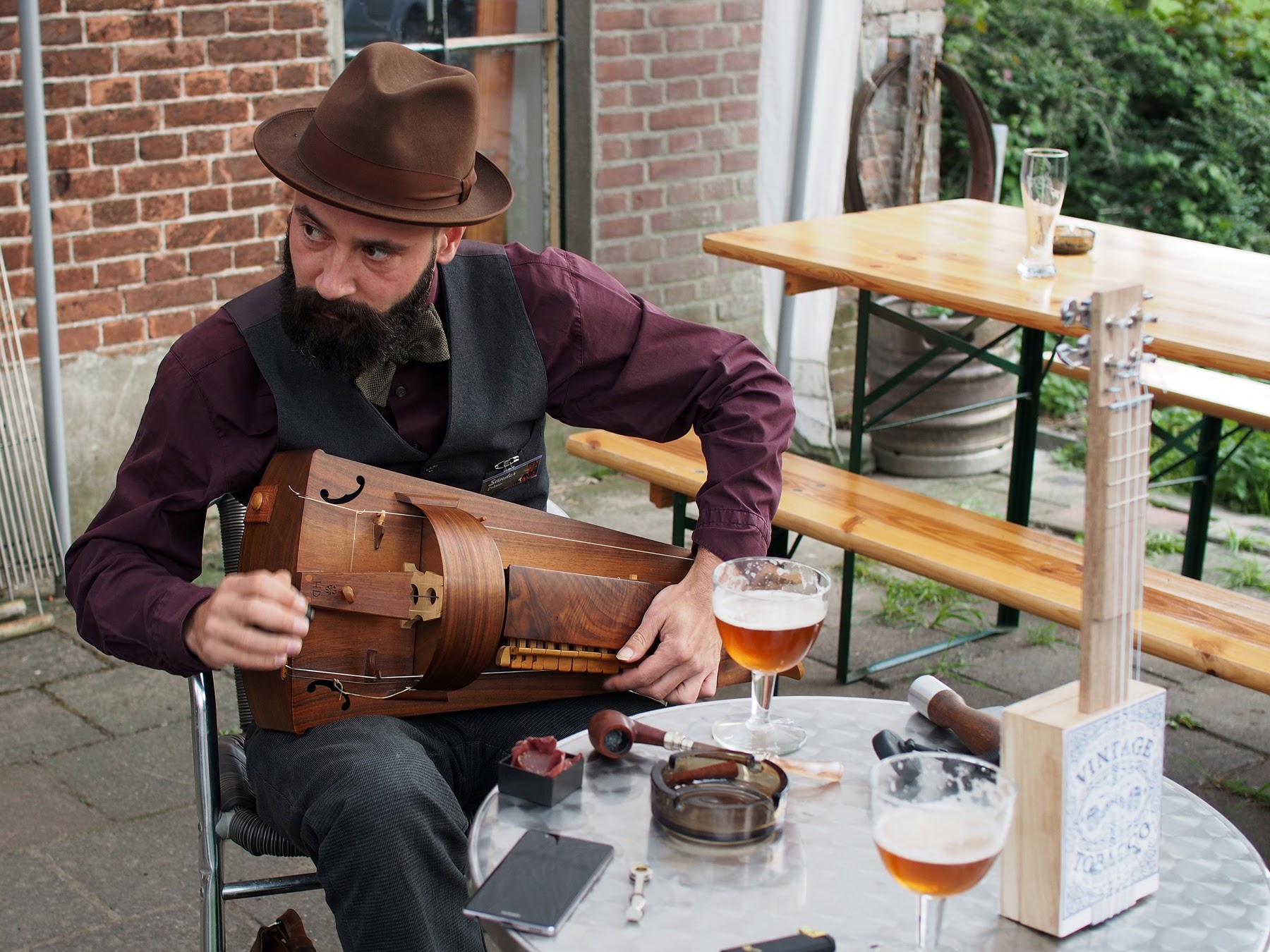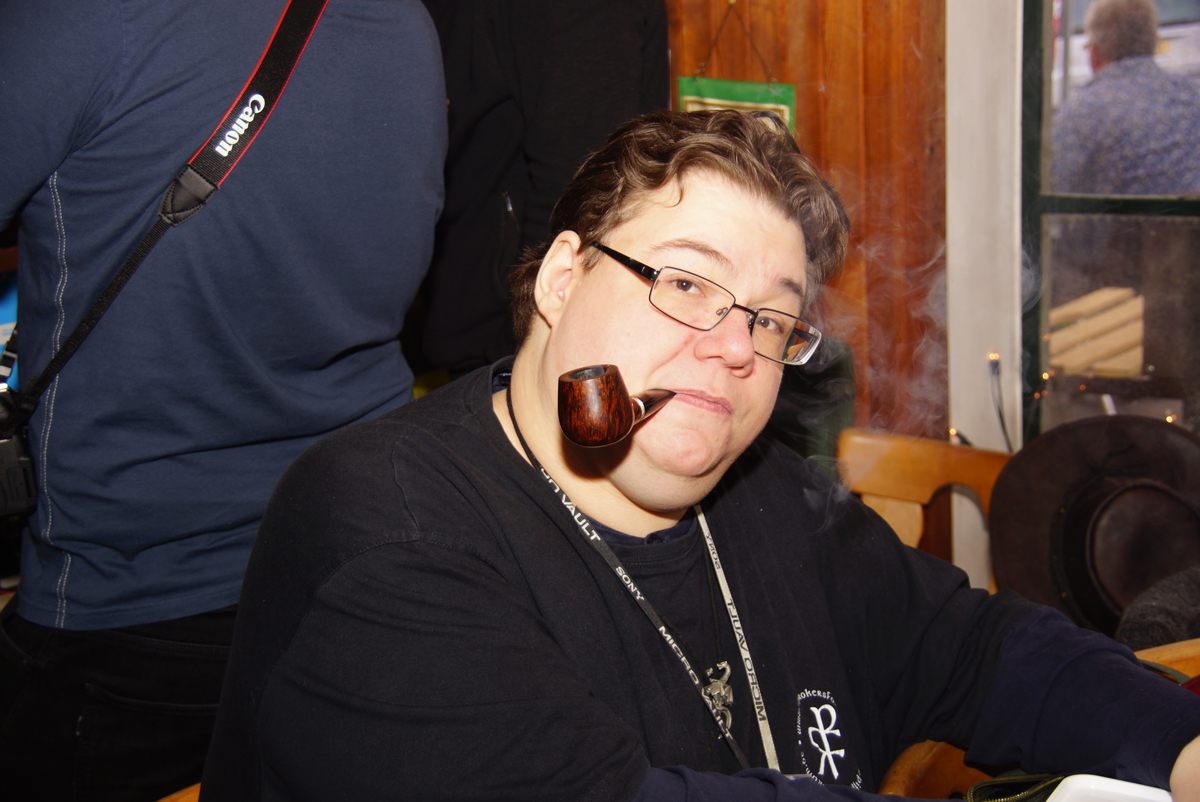As some of you know annually the Dutch/Belgian Pipe Smokers Forum (PRF) has a forum pipe made by a (well-known) carver. Throughout the years people like Elie, Dirk Claessen, Ian Walker and the Big Ben and BriarWorks International companies delivered us exquisite smoking gear. This year organizing it all was a joint venture of Nick (from Massis Pipes) and Shaun. I’ll give you Nick: After Shaun had managed this project for several years to a successful conclusion on his own and a first ‘cooperation version’ with Dre in 2015, we now opted for a similar direction as last year where Shaun will take care of the financial side of the story and I keep myself busy with contacting the pipe maker and later the distribution of the pipes. After a lot of consultation and contacting several pipe makers and factories, we finally came to a decision. It is with some pride that I can announce that the 2017 PRF Pipe is the first to be made by a woman, to be precise Sabina Santos from Portugal.
Sabina is relatively new in the world of pipe-making (she recently celebrated her 3rd birthday as a pipe maker), but has already managed to develop an unique style. Moreover – fun fact for our forum – her roots lie in the Netherlands. She was actually born in Tiel and spent the first three years of her life there. As a result she is very excited that we have chosen her this year, as evidenced by the total package and the price at which she is willing to do this for us. After extensive consultation we opted for a squat Rhodesian, the signature shape of Sabina. She works exclusively with wood from the world’s best briar supplier Mimmo Romeo. The mouthpiece is made of black acrylic, the accent ring is made of “turtle” acrylic. The top of the pipe will always be finished smooth. At the bottom you have the choice between two options: rusticated or Honeycomb. The rusticated version is €142 and the Honeycomb €157 including shipping costs. As always the forum pipe is supplied with a certificate from the maker. But especially for us Sabina has decided to make separate pipe bags and put our logo and the text “by Sabina” on the cork tags. Normally Sabina engraves her pipes by hand or let them engrave by laser at an additional cost. However, especially for us Sabina has decided to have her logo, the serial number and PRF logo laser-engraved in each pipe without extra cost.
When I saw the first example pictures I just had to order the pipe with the unique honeycomb finish. I always loved the Rhodesian shape and already had my eye for some time on the pipes Sabina made. Despite she only has been carving for 3 years she makes wonderful and creative pipes with a good eye for lines and shapes. At the day of Christmas Eve my doorbell suddenly rang. “A package sir, merry Christmas!” Quickly I ripped it open and to my utter delight it was the forum pipe! I loved the size and shape of it with the delicately done honeycomb finish. Unfortunately I had caught a cold that lasted for several weeks so only at the beginning of the new year I finally could smoke the pipe. And I was not disappointed, it is a good smoker and will earn a place in the pantheon of my smoking pipes. I mailed Sabina and asked if she was willing to do an interview for this blog, and she was.
When how and where did you learn to carve and shape briar wood to make smoking pipes? During my professional job (I have a Communication Degree but I always worked in a Financial area) I always missed an activity in which I could express myself. When my husband, a long time pipe smoker, began to explore the pipe making as an hobby, I began to find it very interesting too. After all we take a block of wood and carve it into a pipe! Amazing! I’ve been following his development and I began to love the idea of carving a pipe. So I wanted to learn and try it. When I was pregnant, I decided to be a stay at home mother. However I missed an occupation that I could conciliate with the role of a mother and one in which I could give wings to my creativity. So I decided to go ahead with the idea of making a pipe. I carved my first pipe, a Poker, on July 2013 and it was the beginning of my journey as pipe maker. I feel that I learn every time I carve a pipe. Pipe making is really a delight! When I started making pipes, as my son was newborn, I only had time to make the drills in the workshop and finish the pipes in my kitchen while the baby was sleeping. For that reason, each one of my pipes is unique because it tells a story, my story as a pipe maker and a mother. Each person who gets one of my pipes, also receives a part of me. Now, I work in my workshop in part-time. It’s very relaxing being at the workshop carving a pipe. A unique piece, made by me with all my love and care.
What kinds of woods do you use for your pipes? I only use Italian briar and sometimes I use Morta (Bog Oak). I also use some exotic woods for accents. I tried several briar suppliers but now I exclusively work with Mimmo Romeo.
What materials do you use for your stems? During some time I used pre-made acrylic stems which were hand finished by me. Then I started making my own stems and now I prefer to use German ebonite and cumberland.
Can you tell something about the equipment you use for the making of the pipes? I was lucky and from the beginning I already had a workshop with some machines and tools my husband bought. After some time I took control of the workshop an now it is my “cave”. The main machines and tools I use are a metal lathe, a powerful Dremel, a sanding disc, a sanding belt and files. My workshop is my space, my world, where I can find myself. There, I can finally give wings to my creativity! Working in a workshop is something much more masculine, I think. It is not every day I meet a woman working in the middle of machinery, wood and dust. But I just love it!! I mean, I’m a woman, a wife and a mother, that loves make up but I also love to work in my workshop! I love work on lathe and my Demmel is my best friend!
When making pipes, do you have a favourite pipe shape and if so, why that one? I love Rhodesians and all the related family. I carved several Rhodesians and in the future I would like to explore the Bulldog and Eskimo shapes for example. I love the hand-feel of the Rhodesian and it is also a great shape to play around with finishes, for example a smooth top and rusticated bottom.
You are very creative with coming up with new finishes, my compliments! Can you tell more about the inspiration for the Soul collection and how you make them? Many thanks! I love rusticated pipes and some of my favourite pipe makers are Masters in rustications. I always loved the work of Konstantin Shekita, he carves some stunning lattice pipes. The inspiration for my Soul pipes came from his work. I love the concept of the lattice and as in Portugal we have a traditional hand craft, “Renda” (hand made lace), I decided to give it try. So I took the concept of the Portuguese “Renda” and applied it to my pipes. My Soul pipes are quite unique because the lattice is all open, just touching the pipe in the top and near the stem. So in the end you get a visual effect of a pipe inside the lattice, despite they are carved from a unique piece of briar. To carve this pipes I use my Dremel and lots of patience and love.
Can you tell more about the inspiration for the Honeycomb pipes and how you make them? I like to play around with rustications and one time when I was exploring the effect of a rustication with “holes”, an image of a Honeycomb came into my mind and I started to recreate it. Nowadays it is a kind of signature rustication from me.
Can you tell more about the inspiration for the Iced Green pipes and how you make them? They look like they have been in the fridge for some time! The inspiration came from one of my husbands hobbies. He likes to paint war miniatures and has great techniques for that. I liked one of these techniques, the “Dry Brush” and decided to give it a try on my pipes! The first attempt was with blue and I also made one in red but the Iced Green one is the most popular for sure.
Can you tell more about the inspiration for the Broken pipes and how you make them? I really like the idea of something broken but beautiful at same time. I like the philosophy of a “Broken Body, Strong Mind”. Other pipe makers already explored the idea of a broken shank; Ser Jacopo, Werner Mummert and Eder Mathias for example. As it is something I love, I decided to give it my own approach and created the Broken Pipes. When we look it seems the shank is broken but in fact we have a regular pipe ended in plateaux skin with a hand made stem with a plateaux skin ring chosen by me especially to match with the stummel.
On which pipe you made are you most proud? The Smooth Soul Rhodesian. I was sanding all night until 5 AM because I was super excited to see the result.
What makes a Sabina pipe a Sabina pipe? You have certain “golden rules” that you apply with every pipe you make? What makes a Sabina Pipe is my own style I guess. I still have lots to learn in order to improve my skills. But during this 3 year journey I always tried to follow my own style. I like to play around with textures and finish and I don’t have fear of it. Despite there are lots of more conservative pipe smokers, there are also many space for new creations and that is the beauty of the pipe community. I also love a classic pipe, but always with a twist, something that gives it an unique personality.
Do you smoke pipe yourself? If so, what are your favourite pipes? I started carving pipes a long time before I tried to smoke one. First I fell in love with the shape and then I started wanting to try it because I should know my work and how a pipe should be smoked. But I’m not an experienced pipe smoker, I just smoke occasionally.
What (beside your own pipes) are your favourite pipe-brands/makers? That would provide an extended list… For example, I really love the work of the pipe makers João Reis, Konstantin Shekita, Alex Brishuta, Chris Asteriou, Uwe Maier… But there are many others in my top favourite list… Again, I like the work of pipe makers with an unique style.
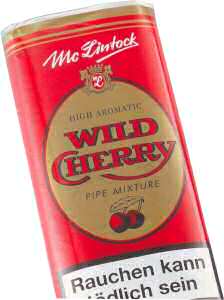 What is your favourite tobacco-blend (to smoke or to smell)? I like to smoke aromatics, especially with a Cherry taste. I usually love the smell of all pipe tobaccos, but some of them are a bit strong for me to smoke. For example my husband likes Latakia, Perique, Black Cavendish… All strong stuff for me.
What is your favourite tobacco-blend (to smoke or to smell)? I like to smoke aromatics, especially with a Cherry taste. I usually love the smell of all pipe tobaccos, but some of them are a bit strong for me to smoke. For example my husband likes Latakia, Perique, Black Cavendish… All strong stuff for me.
Any last words for readers? If there are some readers who have a dream (pipe making for example) I would like to say to always follow your dreams and always give something you really want a try. Learn from the mistakes and get stronger with each fall.
As I write this Sabina is in Denmark to improve on her already considerable pipe making skills by learning from masters like Tom Eltang, João Reis, Tao, Kai Nielsen and Kurt Balleby. Below are pictures of the process of making the forum pipe in general and of course images of my own forum pipe.
https://www.sabinapipes.com/
https://www.facebook.com/sabinasantospipes/?fref=ts

